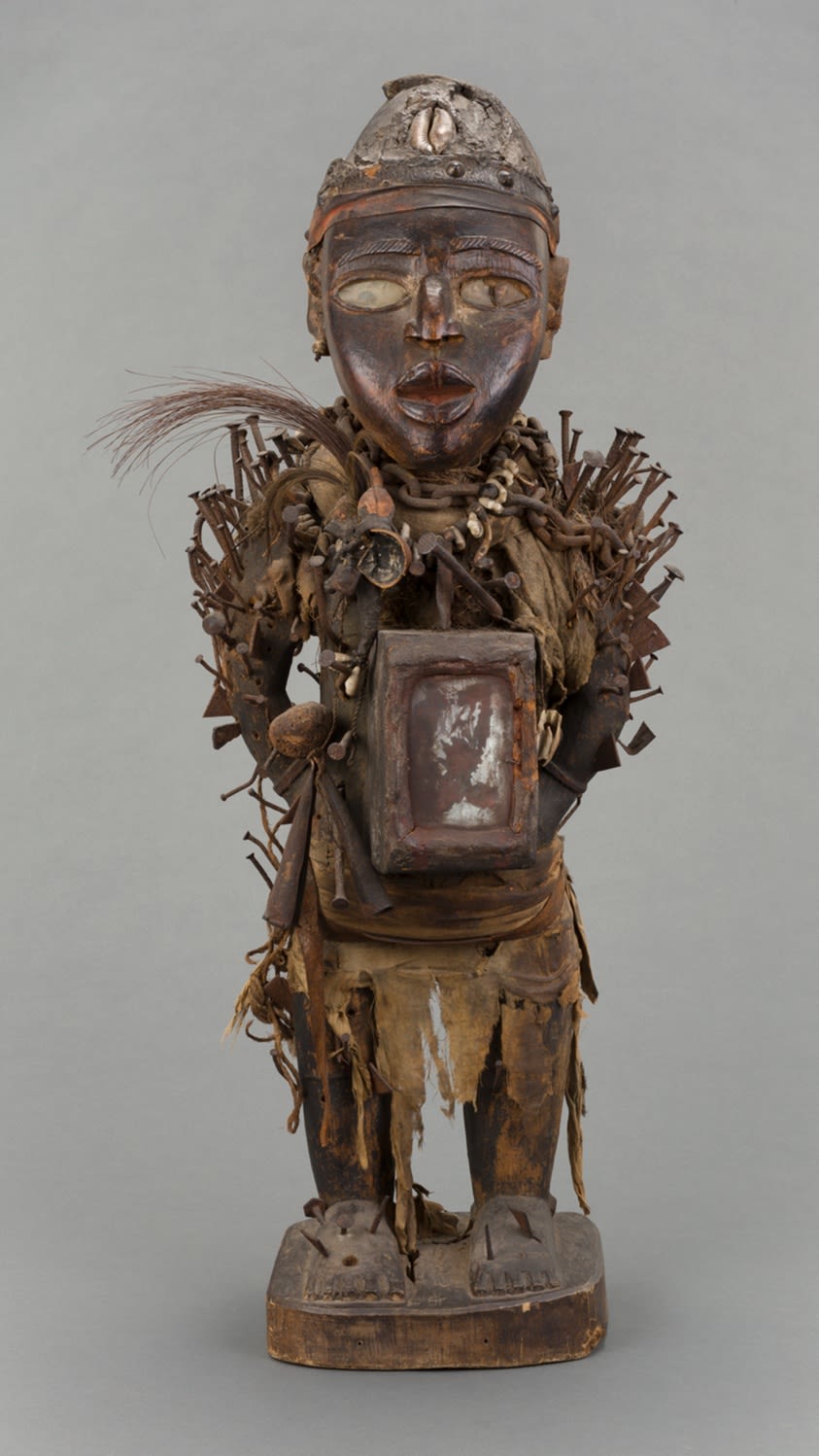MOST LIKELY TO THINK OUTSIDE THE BOX
Art Beyond Objecthood with Juan Angel Chavez
Male Figure (Nkisi Nkondi)

Male Figure (Nkisi Nkondi), wood, metal, glass, fabric, fiber, cowrie shells, bone, leather, gourd, and feathers. Image courtesy of the Art Institute of Chicago
Male Figure (Nkisi Nkondi), wood, metal, glass, fabric, fiber, cowrie shells, bone, leather, gourd, and feathers. Image courtesy of the Art Institute of Chicago
by Carla Burkert
When School of the Art Institute of Chicago Assistant Professor, Adj. Juan Angel Chavez (SAIC 1990–91) visits museums, he seeks a spiritual experience above all else: artworks that are charged for reasons beyond their aesthetic qualities and break the boundaries of what we traditionally consider art.
For Chavez, the Congolese power figures Nkisi Nkondi at the Art Institute of Chicago provide just that.
Nkisi Nkondi are carved wooden figures coated in a patina, penetrated by nails, and dressed with fiber, feathers, and cowrie shells. The museum’s Nkisi Nkondi carries a mirror-covered container in the front with glass-inlaid eyes. They are highly charged spirit figures. Created to hunt witches and wrongdoers, each figure was powered by substances placed inside its body by a priest. Once spiritually activated, the figure was accessible to all community members who studded it with nails and added fibers and shells, each material addition strengthening its power.
To Chavez, the Nkisi Nkondi figures are beyond art. They represent communal belief and carry a powerful force that persists today.
“When we look at something that is beyond physical values, that is emotional, that is ceremonial, it doesn’t have a limit, or shape, or form. It keeps going,” said Chavez. “It carries so much energy. It transcends emotions and beliefs.”
Chavez began his professional career as a muralist. Since then his practice has transformed to public installations, assemblages, and found-object immersions. Scraping the Bowl, a site-specific installation hosted by New Harmony Gallery of Contemporary Art in Indiana, was a community action in deteriorating 18th century French trapper cabins that were set to be demolished. For the installation, which engaged themes of exploration and survival, Chavez first coordinated with the local fire department to ceremonially burn one of the cabins, then he organized a day with the local ROTC to allow community members to fire at the cabin with guns, and finally, carve the remaining material with chainsaws.
“Community engagement is everything to me. It really opens the door to endless possibilities of what art could be,” said Chavez.
“When we look at something that is beyond physical values, that is emotional, that is ceremonial, it doesn’t have a limit, or shape, or form. It keeps going,” said Chavez. “It carries so much energy. It transcends emotions and beliefs.”
Nkisi Nkondi were important features of Congolese communities, and similar to Chavez’s artistic interests, their material creates meaning beyond objecthood. Their function and importance to activating communal needs are what continue to charge their presence.
“I appreciate some of the aesthetic elements that exist, but specifically, I think these get more to the general concept of their charisma, their presence. I like that they’re so powerful in that regard, that their presence dictates my attention,” said Chavez. “My goal [as an artist] is to get to that place.” ■
